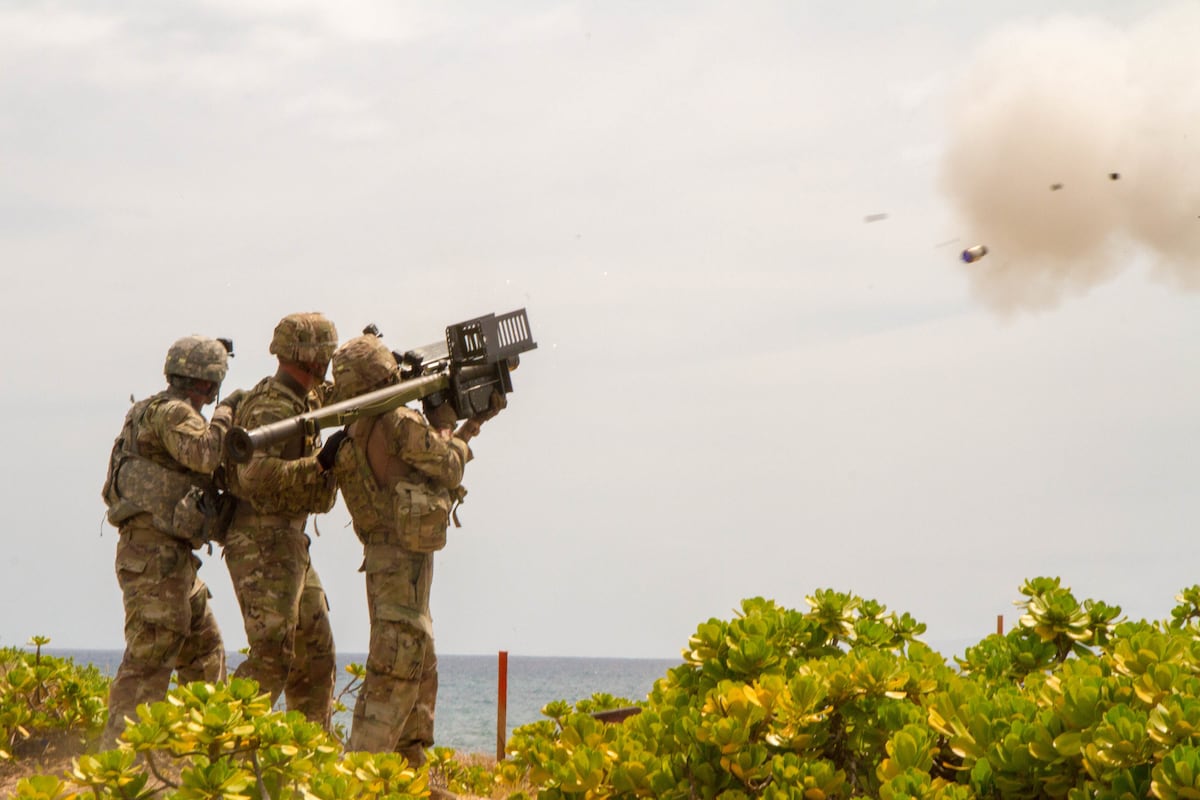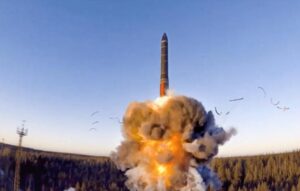德国批准资金开发高超音速武器,采购数千枚导弹

快速阅读: 7月12日,德国议会批准购买3266枚Brimstone 3火箭和开发超音速Tyrfing导弹的资金,与挪威合作,计划2035年完成,总投入约6.95亿美元。此举旨在增强海军实力,应对俄罗斯威胁。
BERLIN — Germany’s parliament has authorized money for the purchase of thousands of missiles and the development of a supersonic naval cruise missile, according to a Defence Ministry news release.
Germany will join forces with Norway in developing the supersonic Tyrfing missile. A key parliamentary committee released the funds Wednesday for Berlin’s first foray into developing modern naval missiles. Currently, most of the country’s naval missile arsenal is French- or American-made.
Although Norway and its state-owned arms manufacturer Kongsberg will take a leading role, the German government expects to contribute about €650 million (U.S. $695 million) to the project between now and 2033.
A new missile for Norway and Germany will be known as 3SM Tyrfing and is scheduled to be ready in 2035. (Kongsberg)
The contract, which is to conclude by August, will see Diehl Defence and MBDA perform work on the German side.
At least initially, Germany’s half will be funded from Chancellor Olaf Scholz’s special fund for the military. That money was put together in the immediate aftermath of
Russia’s full-scale invasion of Ukraine
in February 2022.
In later years, the money is to come out of the regular defense budget.
Kongsberg describes the Tyrfing as a “new super missile” that will succeed the Naval Strike Missile developed in the early 2000s. The 3SM — an abbreviation for Super Sonic Strike Missile — should be ready in 2035, the company said in a news release late last year.
In addition to Norway and Germany, Kongsberg hopes the missile will have export potential to other “European armed forces.”
Weapons purchase
The German budgetary committee also approved the purchase of up to 3,266 Brimstone 3 rockets for delivery by 2033 under a contract expected to be passed by the parliament next month.
Initially, the country will receive 274 missiles and the requisite equipment, purchased from MBDA Germany for about €376 million. An additional 29 Brimstones will be used for operational testing and 75 further for training and telemetry.
The rockets are destined for the country’s Eurofighter fleet, which forms the fighting backbone of its Air Force. Berlin first announced its intention to procure the air-to-ground missile in 2017.
The British Royal Air Force has used the Brimstone family of missiles for nearly two decades, including in war zones in Afghanistan, Iraq and Syria. A contingent of German Eurofighters is also deployed in the Baltics, where they serve to strengthen NATO’s posture at its flank with Russia.
Aside from entirely new purchases, the parliamentary budget committee also approved the procurement of 506 Stinger man-portable air defense systems worth about €395 million as a replacement for 500 of the ground-to-air, shoulder-launched missiles that were sent to Ukraine.
Germany has taken a leading role in supporting Kyiv’s armament, sending more military support than any other country except the United States. According to the Germany-based Kiel Institute for the World Economy, the government has sent €10.2 billion in military aid to Ukraine as of the end of April 2024.
About
Linus Höller
Linus Höller is Defense News’ Europe correspondent and OSINT investigator. He reports on the arms deals, sanctions, and geopolitics shaping Europe and the world. He holds a master’s degrees in WMD nonproliferation, terrorism studies, and international relations, and works in four languages: English, German, Russian, and Spanish.
Share:
More In MilTech
Space Force wargame could inform framework for allied info sharing
The two-week wargame is focused on understanding what capabilities and operational concepts the Space Force might need 10 years into the future.
New ‘Vulcan’ rocket to fly first military mission next week
Pending range approval, the mission is slated to lift off Aug. 12 from Cape Canaveral Space Force Station in Florida.
Space Force preps infrastructure, operators for target-tracking mission
The service plans to launch initial ground moving target indicator satellites over the next year, according to Lt. Gen. DeAnna Burt.
Senate confirms new top Navy leader, vice chief for Space Force
Adm. Daryl Caudle, who has been the commander of U.S. Fleet Forces Command since 2021, was approved as the next chief of naval operations.
Joby, L3Harris developing autonomous aircraft for defense missions
The companies plan to start flight tests this fall and be ready to demonstrate operational capabilities in government exercises by 2026.
(以上内容均由Ai生成)







